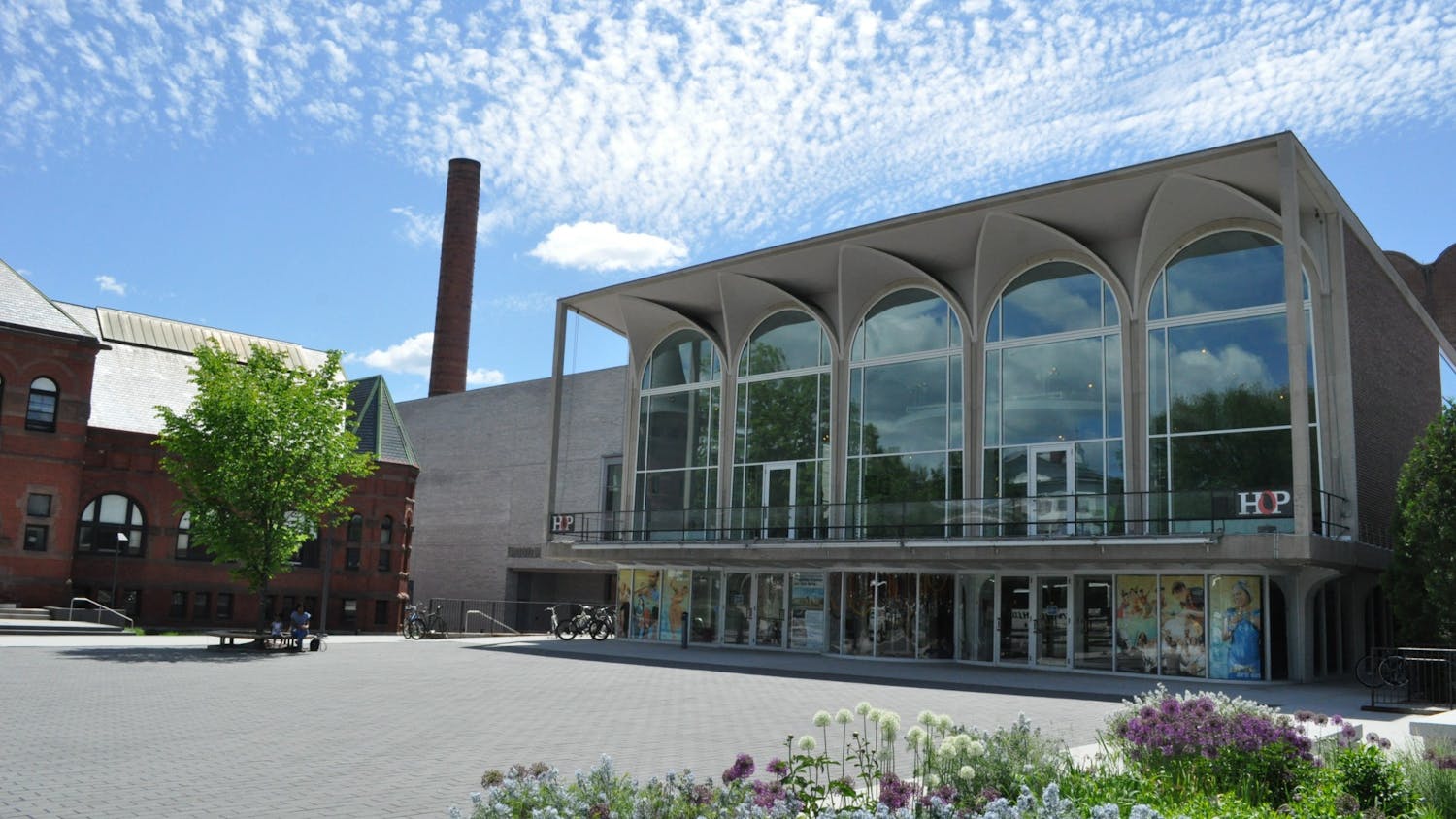"The beginning is choosing a play," Alexi-Meskhishvili explained. "You read the play, take your notes and meet with the director. This is a kind of an artistic conversation where we try to figure out technically what he needs."
Georgi, as he is called by both students and colleagues, then makes a scale model of the set, which he shows to the director, in this case theater department chair Peter Hackett. Next he sends the final design to the scene shop, where technical director Scott Silver and master carpenter Carl Choquette get to work.
"It's up to them how my set is going to look," he said.
Alexi-Meskhishvili, who has designed over 100 sets, has worked at prominent theaters all over the globe, including the Metropolitan Opera in New York. He also teaches Theater 42 and 43, "Set Design I" and "Set Design II," respectively.
Once the set is complete, the next element, lighting, is added.
"Lighting is what brings the set to life," Alexi-Meskhishvili said.
"The Grapes of Wrath" will require 450 lights, and the crew must hang and focus each one individually.
Director of theater and professor Dan Kotlowitz is the lighting designer for the production. After collaborating with the other directors and watching rehearsals, Kotlowitz came up with a light plot -- a detailed plan of how the lighting will work in the production.
"It's like building a palette in painting," he said.
The play will have 200 to 300 lighting cues. Some will be subtle, while others, like a sunset, will be quite noticeable, Kotlowitz said.
"The Grapes of Wrath" has presented challenges to Kotlowitz due to its setting in the Dust Bowl.
"What happened during the Dust Bowl is that they plowed up all this ground, and then the winds came and blew the whole layer of dirt into the air," Kotlowitz said. "All the light felt different. A sunset is not like a sunset here."
To complicate things, most pictures from the time are in black and white, meaning Kotlowitz wrestled with how to accurately replicate the colors of dust in the air.
Despite these challenges, Kotlowitz said he embraces the setting as a piece of artistic inspiration.
"The physicality of the Dust Bowl, which is a metaphor for what America was going through, this depression, is visually one of the most striking pieces for me," he said.
Theater 40 students, some of whom worked closely with Kotlowitz on lighting, are responsible for the brunt of the construction of the set. "The Grapes of Wrath" features a very complex set with many challenging elements: a pool, a river, rain, fire, the shooting of a gun, a grave and a truck that took two months to construct. The large number of props and set pieces makes "The Grapes of Wrath" a technically challenging play to produce.
Students from Theater 41, "Stage Management," will form a collective stage manager for the production, helping those involved with the technical side of the production communicate with the performance-oriented side.
Veronica Haakonsen '12, a student in both Theater 40 and 41, explained that these elements come together for the first time during "tech week," the week immediately prior to opening night. Often lovingly referred to as "Hell Week," these rehearsals are particularly long and feature frequent stopping and starting to practice cues and scene changes.
When show time arrives, gone will be the directors, designers and production managers, leaving the stage manager in charge.
During performances, audience members often do not realize the extensive planning and activity taking place backstage.
"During the run of the show you've got your backstage crew that are making sure that all of the props are in place for the actors, your dressers who are in charge of quick changes, your fly-line operators who are in charge of all of the scenic elements that fly in the show, your assistant stage managers who are in charge of everything backstage," Haakonsen said.
These individuals are joined by light and sound board operators in the technical booth at the back of the theater.
So when the curtain finally comes up Feb. 19, there will be a story about a sharecropper's journey. But there will also be a story of those not seen, who make sure the actors' journeys are as smooth as possible.




